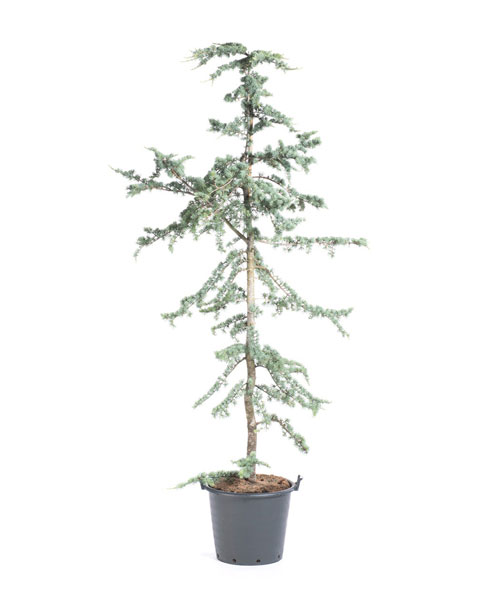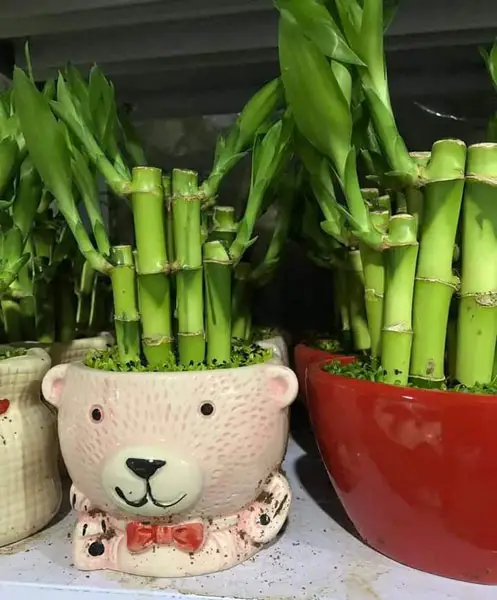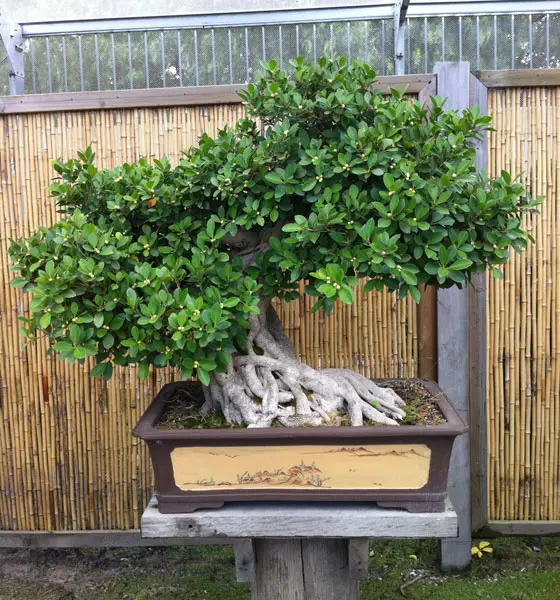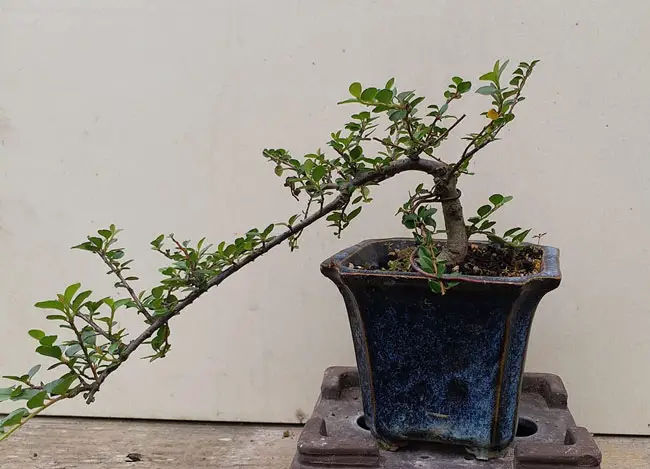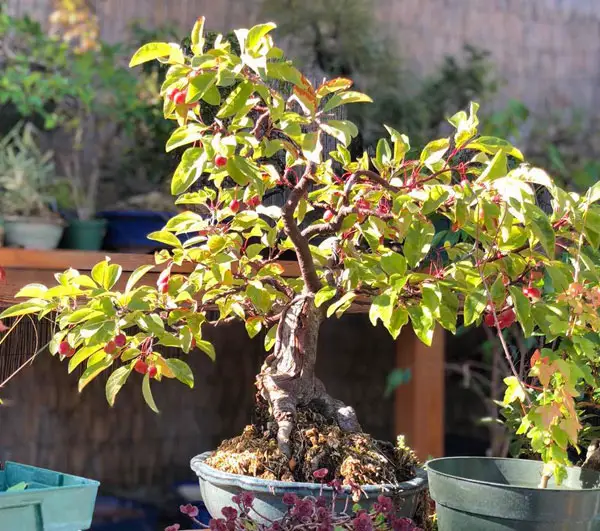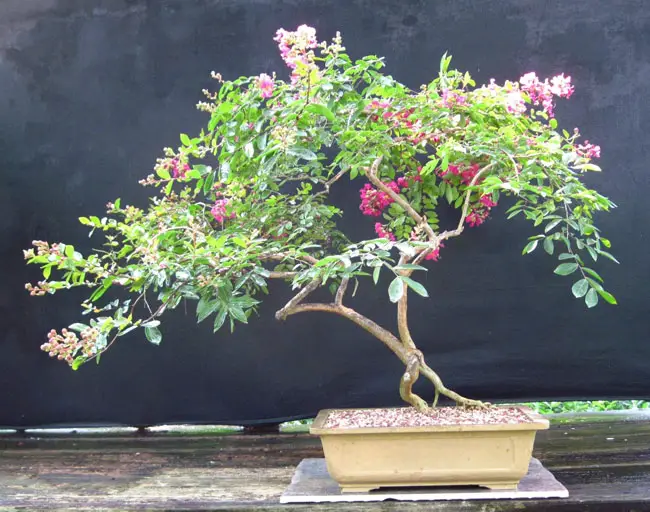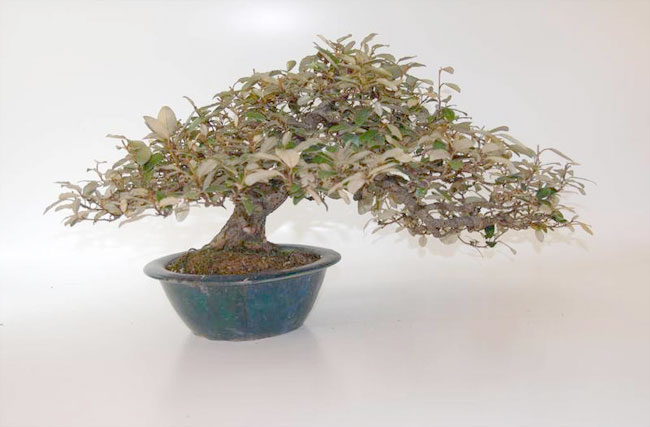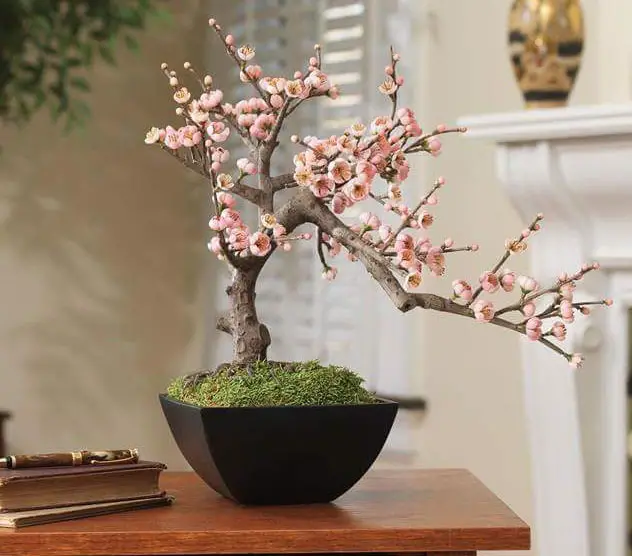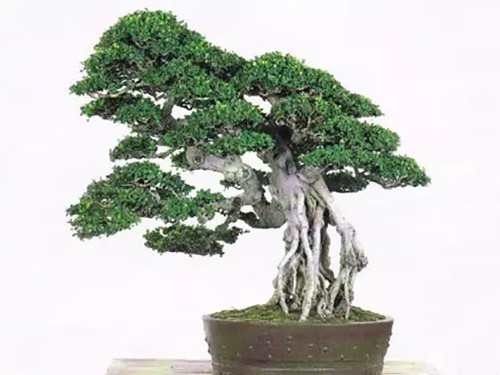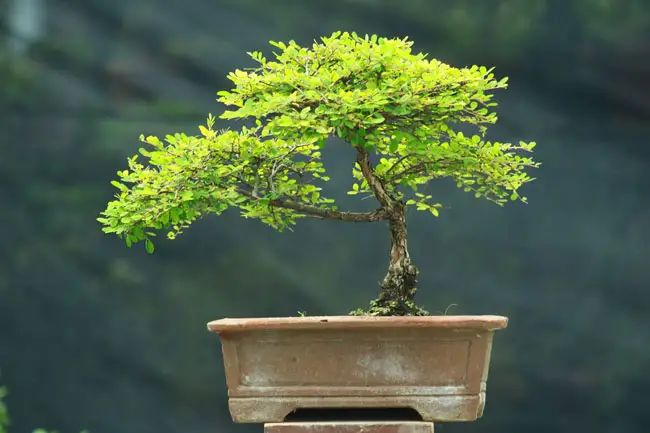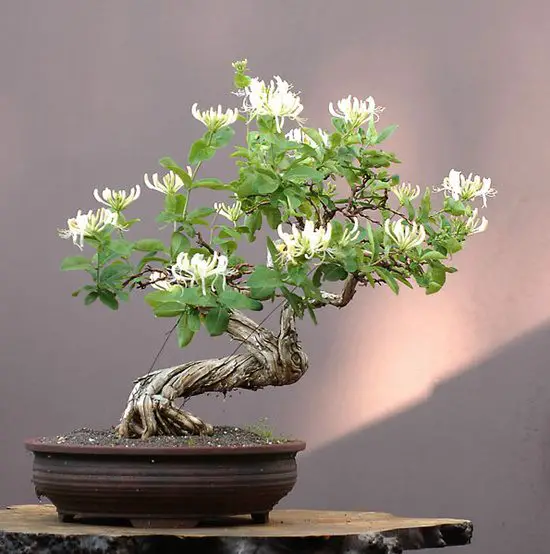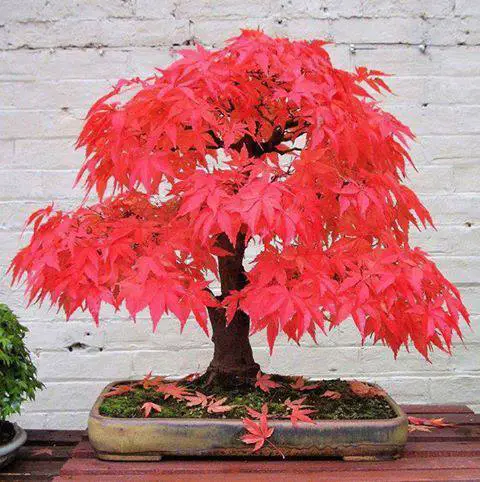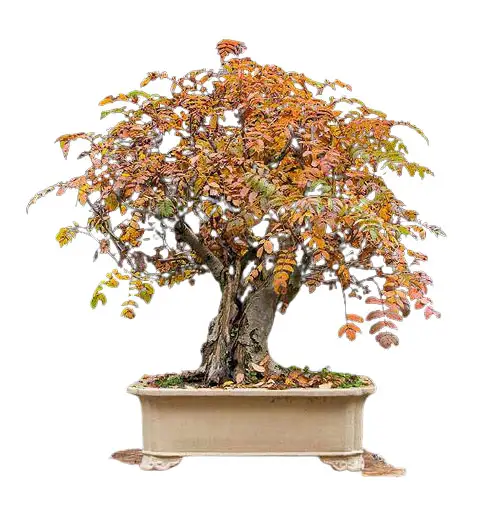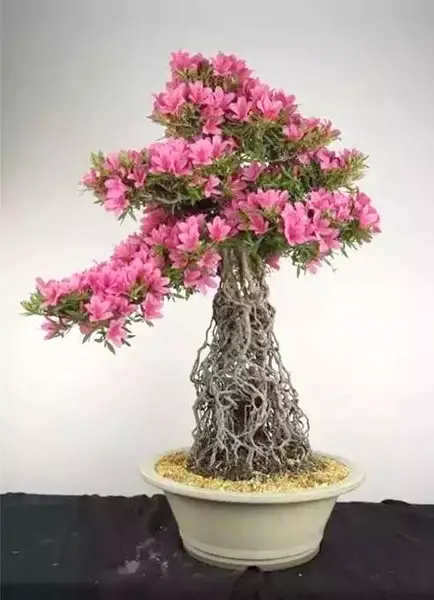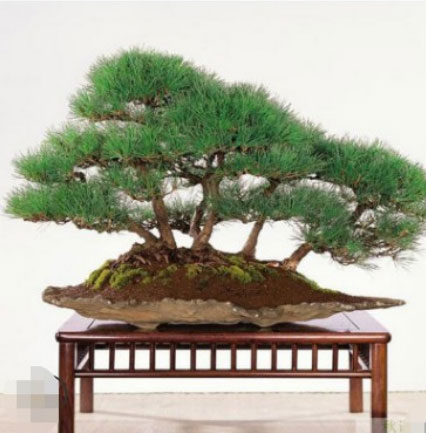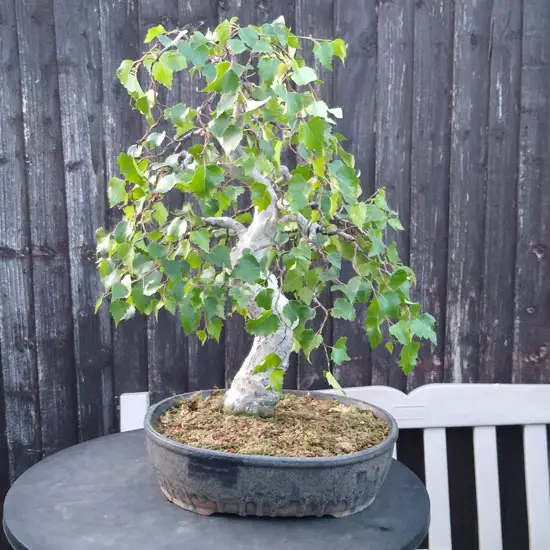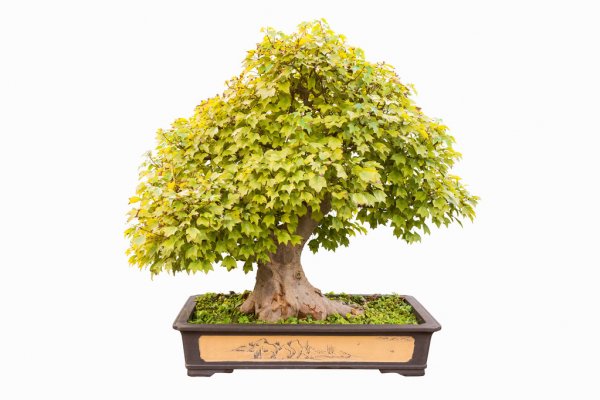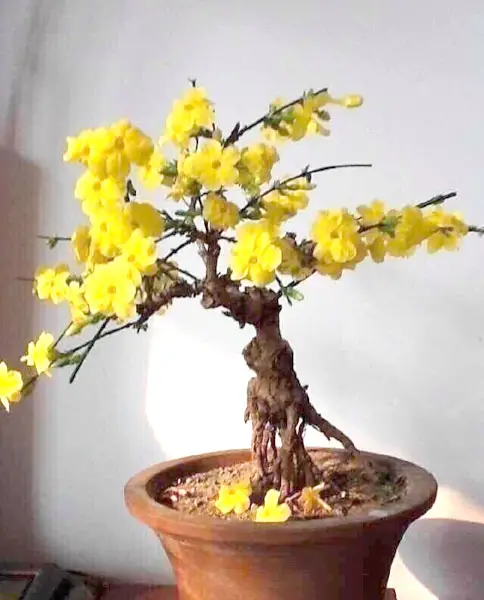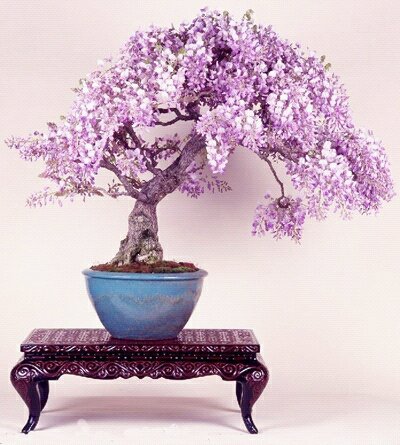There are so many types of bonsai trees in this world, and we just can’t come out with an exact figure on how many different types of bonsai trees exist on the earth.
However, we know that many bonsai trees are popular and relished by many people. I would share the list of different types of bonsai trees that are commonly grown by people.
Atlas Cedar
Atlas Cedar (Cedrus Atlantica) is an evergreen coniferous tree that is native to the Atlas mountains. It has silver to grey bark with crevices on it. It has four-sided dark green or glaucous blue leaves that are pointed. Common pests that attack Atlas cedar are bark beetles and caterpillars; and, the honey fungus causes fungal infection.
Bamboo
Bamboo (Dracena sanderiana) is popular because you can make many species of bamboo into fantastic bonsai. Lucky bamboo is one of the most favorite species of bonsai growers because they said it brings good fortune. Other species of bamboo that can be a great bonsai are Pseudosasa sp., Sasa sp., Phyllostachys sp., and Arundinaria sp.
You can plant up to forty stalks of bamboo, and it will still appear very captivating. Red spider mites commonly attack bamboo. Bamboo can be easily pot-bound.
Banyan Fig
Figs are suitable for growing in an indoor environment because they are tolerant to poor humidity levels and can grow without frequent un exposure.
They can tolerate low or poor light levels because their native habitat is on forest floors and covered by forest shade. They can survive in areas with poor humidity and dry air because of their thick and waxy leaves.
Cotoneaster
Cotoneaster is an arching deciduous shrub. It is an arching and hardy tree that can be easily propagated as a bonsai tree. Cotoneaster has small leaves and attractive flowers that blossom during the spring.
There are varieties of Cotoneaster that produce red berries. Cotoneaster can be formed into different bonsai styles. Cotoneaster (Horizontal), Cotoneaster (Compacta Nana), Cotoneaster (Microphyllus), and Cotoneaster (Congestus) are good candidates to grow as bonsai.
Wooly aphids, aphids, scale, leaf blight, crown-gall, and bacterial fireblight are common pests that affect cotoneaster. Cotoneaster horizontalis attracts bees and wasps, which can be very dangerous to the bonsai grower.
Crab Apples
Crab apples produce fragrant flowers during the spring season, and the colors may vary depending on what species it belongs to. They bear colorful fruits during autumn. Their leaves are alternate, they have a shape of the oval to elliptical, and most of these leaves are toothed.
Common crab apple (Malus sylvestris), Halls crab apple (Malus halliana), Nagasaki crab apple (Malus cerasifera), and Toringo crab apple (Malus toringoides) are common crab apple varieties commonly used as bonsai. Crab apples attract aphids, red spider mites, apple scabs, caterpillars, and mildew.
Crape Myrtle
Crape myrtle (Lagerstroemia indica) is a small tree or large shrub from China and Korea. It has deciduous leaves and flowers that can have deep lilac, pink, and almost white colors. It sheds off its bark, and the underlying bark can have pale gray, rusty brown, and almost pink colors.
It will result in an attractive speckled exterior with fine color, and it appears brilliant during the fall and winter seasons because there are no leaves that will cover its beauty.
Elaeagnus
Elaeagnus is one of the most interesting trees propagated as a bonsai because it has beautiful and fragrant little flowers during spring that turn into orange fruits after pollination.
It is mainly from Asia, and they grow dry and thicket areas. E. multiflora and E. pungens are suitable species as bonsai. Elaeagnus is susceptible to corals spots.
Flowering Cherry
Flowering cherry is a popular tree used as bonsai among Japanese bonsai. It favors exposure to full sun but except in the summer season that it needs to be placed under a semi-shady area. The only problem you can encounter when growing flowering cherry as bonsai is the birds. Birds love to eat the buds of flowering cherries.
Fukien Tea
Fukien Tea (Carmona microphylla) is an evergreen tree that originated from Fujian, Southeast China. It has small, shiny, and dark green leaves. A young Fukien tee tree has light brown bark, and it cracks with age. During summer, it produces small and white five-petaled flowers, which eventually turn into small red cherries.
One problem with Fukien tea is that it’s attractive to insects. Common insects that attack this tree are mealy bugs and white fluffy soft insects. They are frequently found on new branches and at the base of the leaves.
Mealybugs live on the roots, and they cannot be seen unless repotting is done. Scales also attack Fukien tea, and their presence can be detected when the tree becomes sticky and has secretions.
These secretions encourage fungal colonization. Fukien tea is sensitive to many chemicals. Thus you need to test spray any chemical first to a leaf or branch. Then, observe for seven days.
Honey Locust
Honey Locust (Gleditsia triacanthos) is a deciduous tree native to North America. It has spiny trunks and shoots. It has glossy and pinnate dark green leaves and turns yellow when the autumn season approaches.
There are several varieties of honey locusts, and Rubylace is very prominent because of its dark bronze to red leaves that turn into bronze to green color when the summer period comes. Gall midges may be a problem when you propagate honey locusts.
Honeysuckle
Honeysuckle (Lonicera nitida) is an evergreen shrub that is native to Southwest China. Old branches of honeysuckle are very brittle, and they have wonderful trunks. Honeysuckle has 180 species, and most of them are climbers.
But there are shrubby Lonicera species, particularly L. pileata and L. nitida. They are good candidates for bonsai because they have small leaves and can regenerate from old wood. You will not have any problems when growing honeysuckle.
Japanese Maple
Japanese maple (Acer palmatum) is a deciduous shrub or small tree native to China and Japan. Its leaves have five or more lobes that bear a resemblance to a human hand. Its branches and trunks are usually covered with green barks. Some varieties have red barks.
The red variety of Japanese maple is more popularly used as bonsai. Aphids and mildew attack Japanese maples, and root rot can also occur.
Mountain Ash
Mountain ash (Sorbus aucuparia) belongs to the Sorbus genus, and it is commonly used as a bonsai. It is also known as Rowan, which is native to most areas of Asia and Europe. It appears as conical to the round tree and has a loose top or crown.
Mountain ash has mid-green to dark green leaves and turns red and yellow when autumn comes. In the later part of spring, unpleasant-smelling white flowers are produced.
Then, they are followed by the production of spherical red berries that lasts until late winter. Mountain ash is covered with smooth, shiny grey bark, and older trees have dark grey bark with ridges.
Satsuki Azalea
Satsuki azalea (Rhododendron Indicum) is a small shrub that belongs to evergreen, growing up to six feet. It originated from Japan. It is the most common species of azalea that is used as bonsai.
A fascinating characteristic of Satsuki azalea is that it germinates various colored flowers in the same tree. The colors of the flowers are usually red, pink, or white.
They can occur in singles or pairs. Pests that usually attack Satsuki azalea are aphids, whitefly, spider mites, lace bugs, leaf miners, stem borers, and scale. Diseases that contaminate them include leaf gall, mushroom root rot, and petal blight.
Scotch Pine
Scots or Scotch pine (Pinus sylvestris) is conical to a columnar tree native to Western and Northern Europe. When it reaches maturity, it drops its lower branches and forms the literati style naturally. As scots pine ages, its bark develops into flaky and red to brown bark. Common pests that attack Scots pine include sawfly larvae and aphids, and they can contract various needle cast diseases.
Silver Birch
Birch (Betula) is one of the sturdiest and most tolerant among deciduous trees. They have alternate and toothed leaves and are colored with mid to dark green. Its leaves come out after blossoming in April and May.
Silver Birch (Betula pendula) and Downy Birch (Betula pubescens) have white barks. Most birches have shiny and brown trunks and can take many years before their bark turns silvery-white.
Silver birch and Downy birch are the most common species propagated as bonsai. You may encounter problems like aphids and mildew when growing a birch bonsai.
Trident Maple
Trident maple is the best species of maple to become a bonsai. It has a naturally upright growing style, and it can be formed into different styles. It is a popular deciduous tree because it has very attractive colors in its foliage during autumn.
It has naturally small leaves, but it becomes smaller when it is propagated as bonsai. It can have a mature appearance speedy, a beautiful structure, and taper.
Winter Jasmine
Winter jasmine (Jasminum nudiflorum) originated from China. It is a very popular species grown as a bonsai because it is one of the few shrubs that bear flowers in the middle of winter.
A yellow flower is produced that normally starts in fall, and it can extend up to late winter, and sometimes it can reach up to early spring. It has bright, glossy, and green leaves that are separated into three oblong leaflets.
Wisteria
Japanese wisteria (W. floribunda) and Chinese wisteria (W. Sinensis) are good candidates for bonsai propagation. Wisteria grows on moist stream banks in China, Japan, Korea, South and Central United States.
Wisteria is one of the favorites of bonsai growers because they have wonderful green leaves and beautiful flowers. It can be affected by leaf spot, root rot, brown scale, and aphids.

